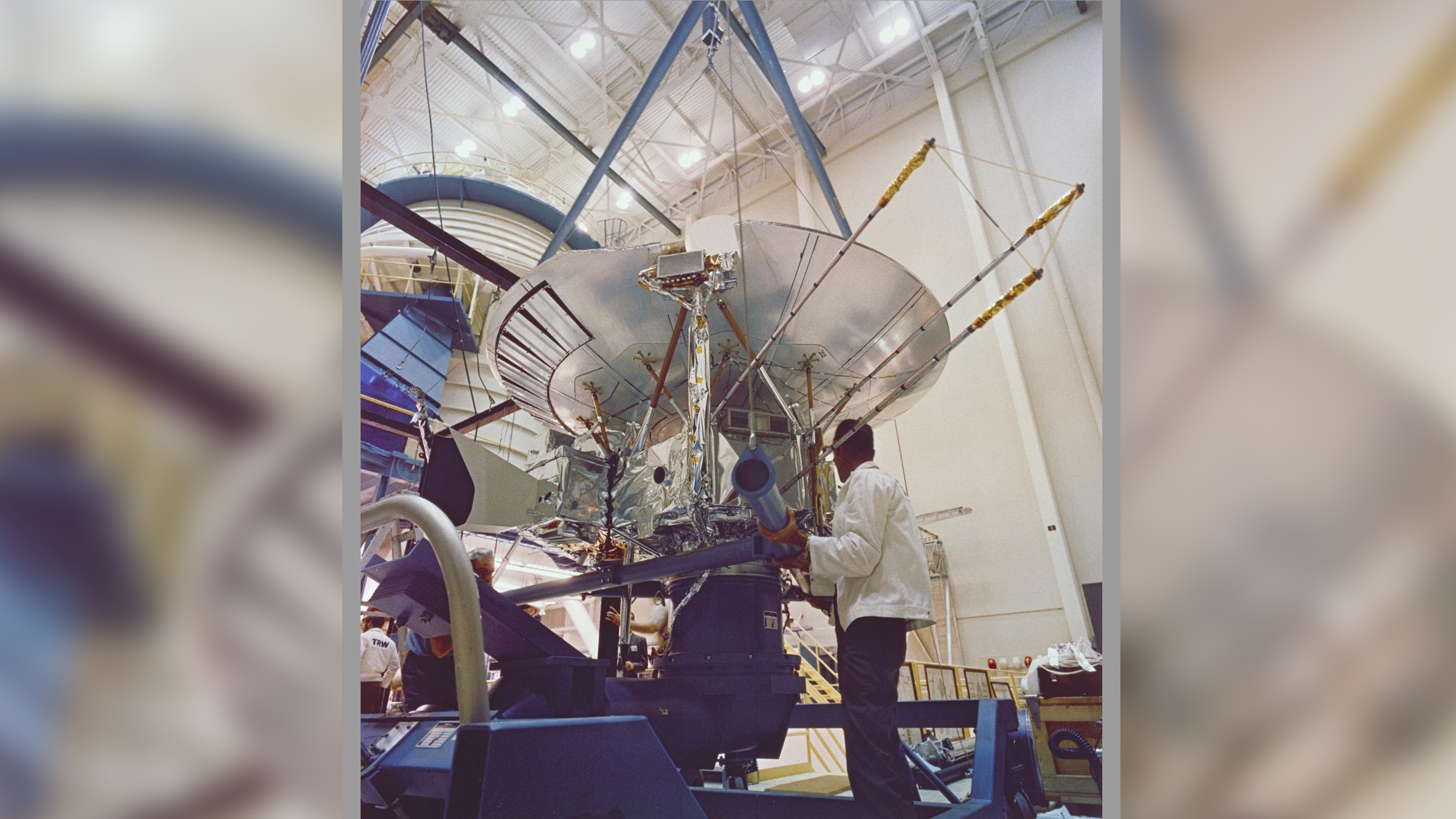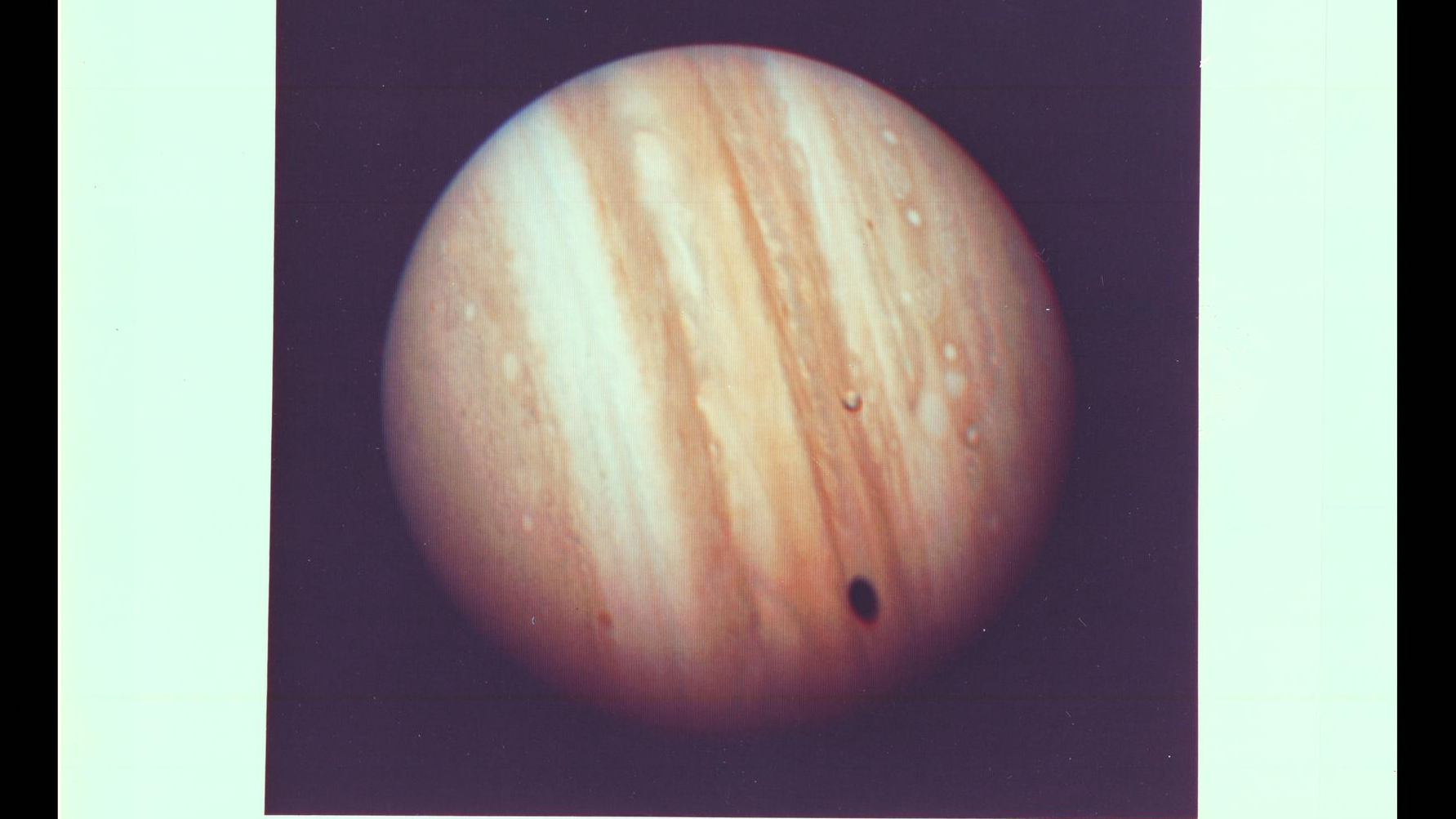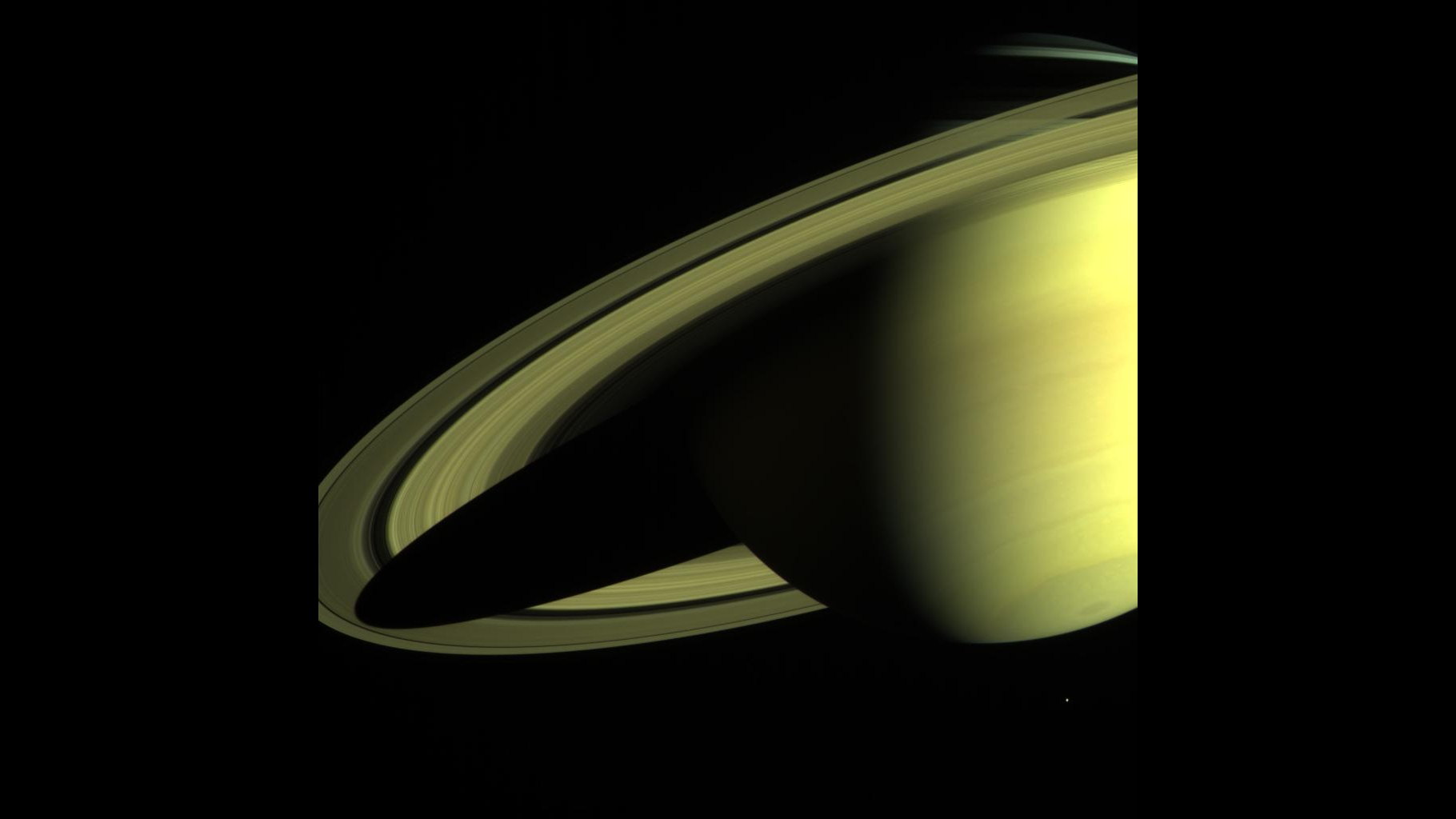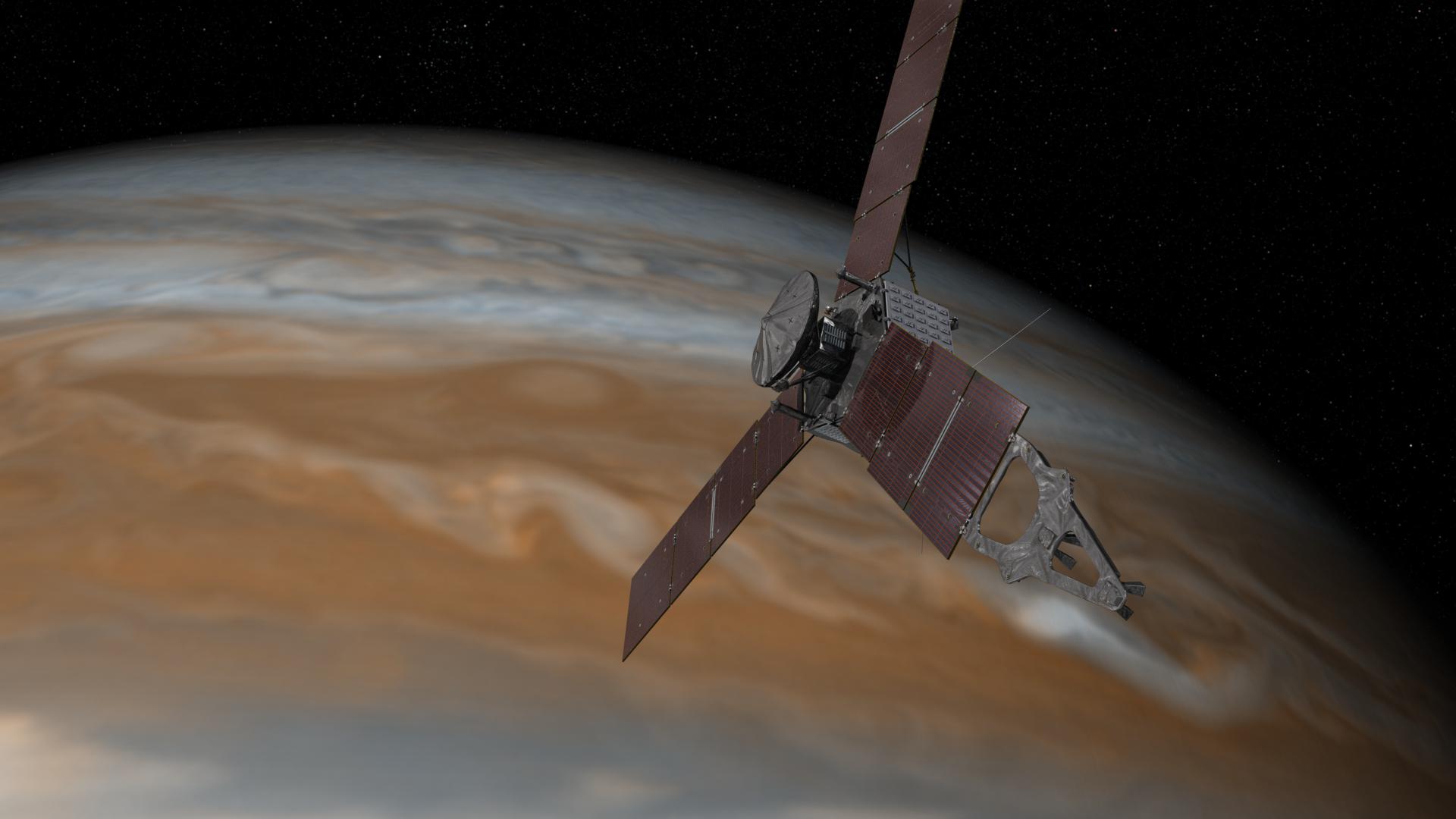Jupiter missions: Past, present and future
Numerous iconic missions have visited Jupiter, and more are on the horizon.
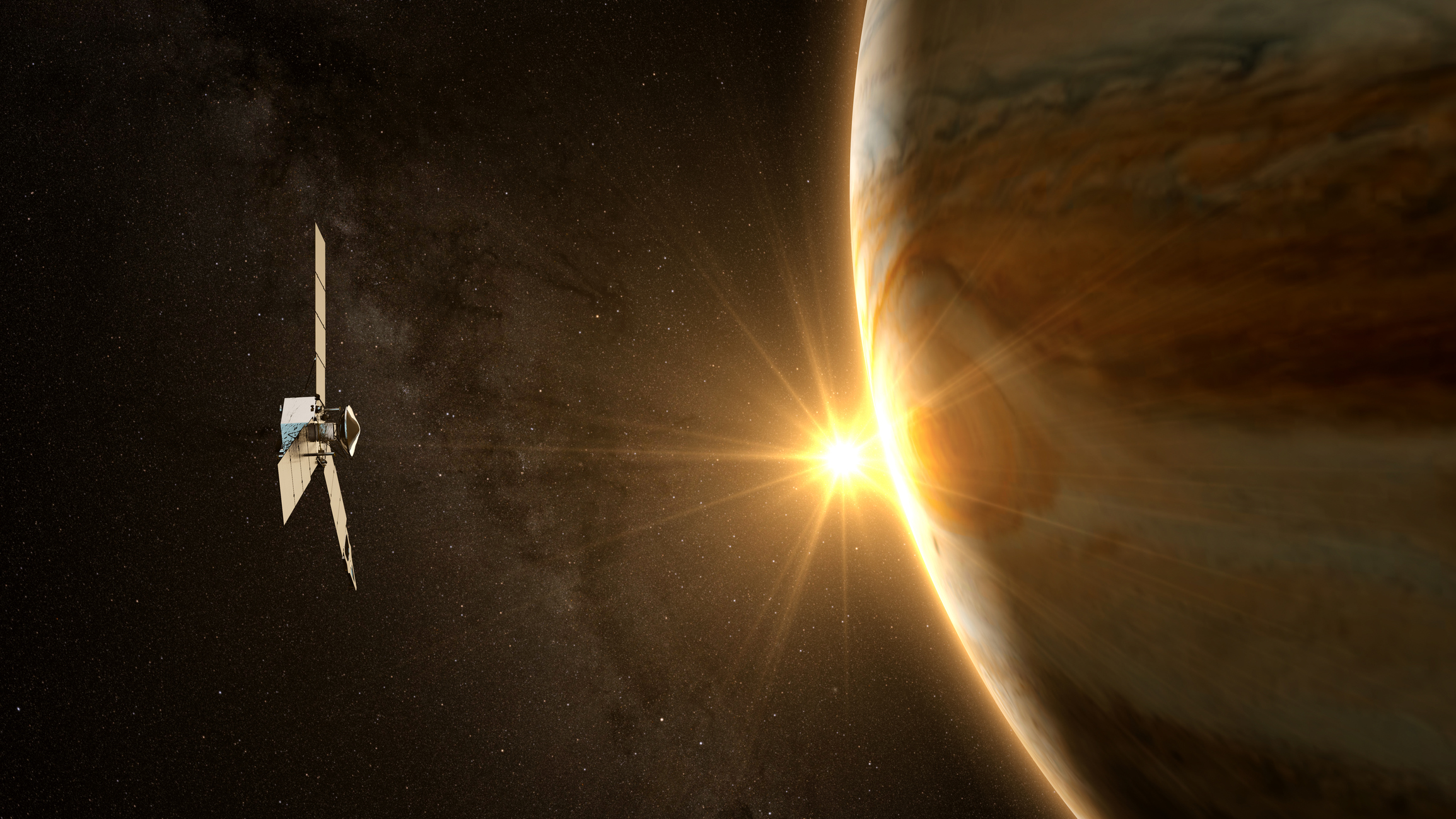
Jupiter, the largest planet in the solar system, is currently being studied by NASA's Juno probe.
But Juno is just one of nine spacecraft to have visited the gas giant, with several other pioneering missions on the horizon, namely the European Space Agency's (ESA) JUICE and NASA's Europa Clipper.
Here we explore every mission to have visited the Jovian neighborhood and also introduce those scheduled to embark on the journey in the next year or two.
Related: Latest Jupiter news
Past Jupiter missions
Pioneer 10
NASA's Pioneer 10 was the first spacecraft ever to make it as far as Jupiter. The probe launched on March 2, 1972, on an ambitious mission to study the asteroid belt, Jupiter's atmosphere and the outer solar system.
About a year and a half after its launch, Pioneer 10 reached the Jovian neighborhood.
The probe cruised within 124,000 miles (200,000 kilometers) of the gas giant's turbulent atmosphere and took measurements of Jupiter's magnetosphere, radiation belts, magnetic field and interior. Pioneer 10's measurement of the intense radiation in the Jovian environment was used to help design the Voyager and Galileo spacecraft that would study the gas giant in even more detail, according to NASA.
Breaking space news, the latest updates on rocket launches, skywatching events and more!
Pioneer 11
A sister ship to its predecessor, Pioneer 11 launched on April 6, 1973. The spacecraft became the second to fly through the asteroid belt and passed Jupiter in December 1974.
Pioneer 11 took many detailed images of Jupiter's Great Red Spot as well as the planet's poles and also measured the mass of the Jovian moon Callisto. Pioneer 11 then became the first spacecraft to encounter Saturn in July 1979.
Voyager 1
Voyager 1 launched on Sept. 5, 1977, and flew past Jupiter in March 1979. The spacecraft captured more than 18,000 images of the gas giant and its moons.
Voyager 1's first pictures of Jupiter beamed back to Earth in April 1978, when the probe was 165 million miles (266 million km) from home. To NASA's surprise, in March 1979 Voyager 1 spotted a thin ring circling the giant planet. It found two new moons as well — Thebe and Metis. Additionally, Voyager 1 sent back detailed pictures of Jupiter's big Galilean moons (Io, Europa, Ganymede and Callisto) as well as Amalthea.
Among Voyager 1's discoveries was the presence of volcanic activity on Io, showing that, like planets, moons can have active interiors.
In 2012, Voyager 1 entered interstellar space, becoming the first human-made object ever to do so. The spacecraft is now approximately 14.6 billion miles (23.5 billion km) away from our planet, making it Earth's farthest spacecraft. Voyager 1 is currently zipping through space at around 38,000 mph (17 kilometers per second), according to NASA's Jet Propulsion Laboratory.
Voyager 2
Voyager 2 launched on Aug. 20, 1977, about two weeks before its twin spacecraft Voyager 1. But the probe reached the Jovian neighborhood later than its twin, arriving in April 1979.
Voyager 2's arrival allowed NASA to take valuable comparison shots of Jupiter and its moons. It captured changes in the Great Red Spot and also resolved some of the moon's surfaces in greater detail.
Voyager 2 took pictures of many of Jupiter's satellites. Among its most spectacular findings were pictures of the icy moon Europa. The probe snapped detailed photos of the icy moon's cracks from 128,000 miles (205,996 km) away and revealed no change in elevation anywhere on the moon's surface. Voyager 2 also captured an image of Adrastea, an exceptionally small moon, about 19 miles (30.5 km) in diameter at its smallest estimate.
Voyager 2 followed its sister ship into interstellar space in 2018.
Galileo
The Galileo spacecraft was the first mission sent to orbit Jupiter. It launched on Oct. 18, 1989, and arrived in orbit around the gas giant in December 1995.
While in orbit, Galileo dropped an atmospheric probe, which measured the temperature, wind speeds and pressure in Jupiter's clouds as it descended.
Galileo's mission was extended to study Jupiter's moons Io, Europa, Ganymede, and Callisto. The spacecraft revealed a trove of secrets about these satellites, including the presence of a salty ocean under Europa's surface and an iron core and magnetic field on Ganymede.
When Galileo was almost out of fuel, NASA deliberately sent the spacecraft on a suicide plunge into Jupiter on Sept. 21, 2003. The sacrifice, the agency said, was necessary to protect Europa — whose subsurface ocean could contain life.
Ulysses
The Ulysses spacecraft launched on Oct. 6, 1990, as part of a joint venture between NASA and ESA to study the sun in more detail.
The probe flew by Jupiter in February 1992 in a gravity assist maneuver to set the probe on track to solar polar orbit.
During the Jupiter flyby, Ulysses gathered helpful measurements of Jupiter's intense magnetic field and radiation environment.
Cassini-Huygens
The Cassini-Huygens probe (a NASA-ESA-Italian Space Agency mission) is best known for its study of Saturn, which the spacecraft entered orbit in 2004. But on its way to the ringed planet, Cassini passed by Jupiter in December 2000, three years after its launch in October 1997.
The probe's high-resolution cameras caught 26,000 dazzling images of the Jovian atmosphere during its months-long flyby. These photos helped scientists revise their understanding of the red and white bands of gas around the planet.
The Huygens probe dropped to the surface of Saturn's moon Titan in 2005, and the Cassini mothership ended its mission with a suicide plunge into Saturn's atmosphere on Sept. 15, 2017, returning valuable science data to the very end.
New Horizons
The New Horizons spacecraft launched on Jan. 19, 2006, and became the first spacecraft to visit the dwarf planet Pluto in July 2015. New Horizons flew by Jupiter between January and May 2007.
The Jupiter visit was an essential part of New Horizons' mission, as the giant planet's gravity provided a once-in-a-lifetime opportunity to slingshot a craft toward Pluto. During the five-month flyby, New Horizons refined calculations of the orbits of Jupiter's inner moons and took the first spacecraft photos of the planet's Little Red Spot.
Among New Horizons' first pictures were shots of Io, Jupiter's volcanic moon. The spacecraft captured the clearest pictures ever taken of the Tvashtar volcano on Io, showing volcanic fallout that was bigger than the state of Texas.
Current missions
Juno
The Juno mission is only the second spacecraft dedicated to studying the solar system's largest planet. The probe launched on Aug. 5, 2011, and arrived at Jupiter on July 4, 2016.
Now in its extended mission, Juno is the most distant planetary orbiter. Juno is busy studying the planet in detail to give scientists a better idea of the gas giant's weather, magnetic environment and formation history.
Some of the most notable Juno scientific discoveries are the first clear, close-up images of Jupiter's north pole; that the gas giant's magnetic field is far more intense than anyone expected; and the discovery that the cyclone at the center of Jupiter's north pole is surrounded by eight more.
Jupiter Icy Moons Explorer (JUICE)
The Jupiter Icy Moons Explorer, or JUICE, is an ESA mission to explore Jupiter and three of its icy moons: Europa, Callisto and Ganymede. During the mission, the spacecraft will orbit Ganymede, the solar system's largest moon, and in doing so will become the first probe to orbit a planetary moon other than Earth's.
The mission successfully launched from Europe's Spaceport in Kourou, French Guiana on April 14, 2023. It will take approximately eight years for JUICE to reach the gas giant.
JUICE will join NASA's Europa Clipper, which is due to launch later than JUICE but will arrive in the Jovian neighborhood first.
Approximately four years after it arrives at the Jupiter system, JUICE will proceed to move into orbit around Ganymede to carry out extensive exploration of the giant moon.
Upcoming missions
Europa Clipper
NASA's Europa Clipper mission is set to explore Jupiter's icy moon Europa and determine whether its underground ocean is habitable. The $5 billion spacecraft is due to launch on Oct. 6, 2024.
If the launch goes according to plan, the probe will reach Jupiter on April 11, 2030, where it will enter a long, looping orbit around the gas giant
Europa Clipper, like NASA's Juno mission before it, will adopt an elliptical orbit that takes it far out from Jupiter and the planet's intense radiation for most of the time. Clipper will sail in for a close approach to Europa and then back out, over and over again, for nearly 50 flybys of the ocean moon. This will allow the spacecraft to pass over a different part of Europa each time to survey the entire surface.
Additional information
Read more about the missions that have explored the Jovian neighborhood with these resources from ESA. See the latest Juno news from NASA's official mission page. Keep up to date with the latest Europa Clipper developments with the official mission website.
Bibliography
NASA. (n.d.). Cassini Overview. NASA. Retrieved March 31, 2023, from https://solarsystem.nasa.gov/missions/cassini/overview/
NASA. (n.d.). Juno Overview. NASA. Retrieved March 31, 2023, from https://solarsystem.nasa.gov/missions/juno/overview/
NASA. (n.d.). Pioneer 10 at Jupiter. NASA. Retrieved March 31, 2023, from https://solarsystem.nasa.gov/resources/707/pioneer-10-at-jupiter
NASA. (n.d.). Voyager - Voyager 1, now most distant human-made object in space. NASA. Retrieved March 31, 2023, from https://voyager.jpl.nasa.gov/news/details.php?article_id=2

Daisy Dobrijevic joined Space.com in February 2022 having previously worked for our sister publication All About Space magazine as a staff writer. Before joining us, Daisy completed an editorial internship with the BBC Sky at Night Magazine and worked at the National Space Centre in Leicester, U.K., where she enjoyed communicating space science to the public. In 2021, Daisy completed a PhD in plant physiology and also holds a Master's in Environmental Science, she is currently based in Nottingham, U.K. Daisy is passionate about all things space, with a penchant for solar activity and space weather. She has a strong interest in astrotourism and loves nothing more than a good northern lights chase!
- Clara MoskowitzAssistant Managing Editor
